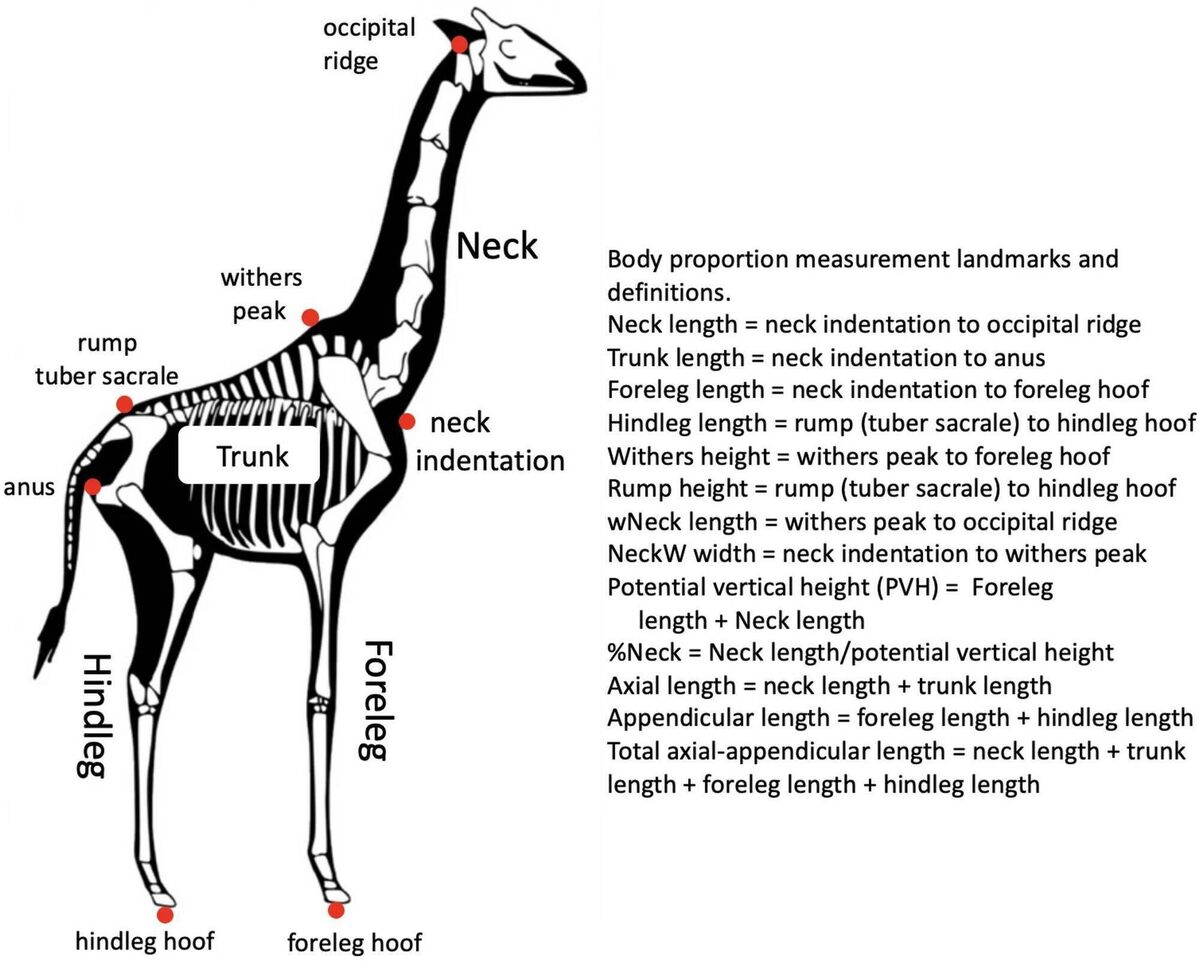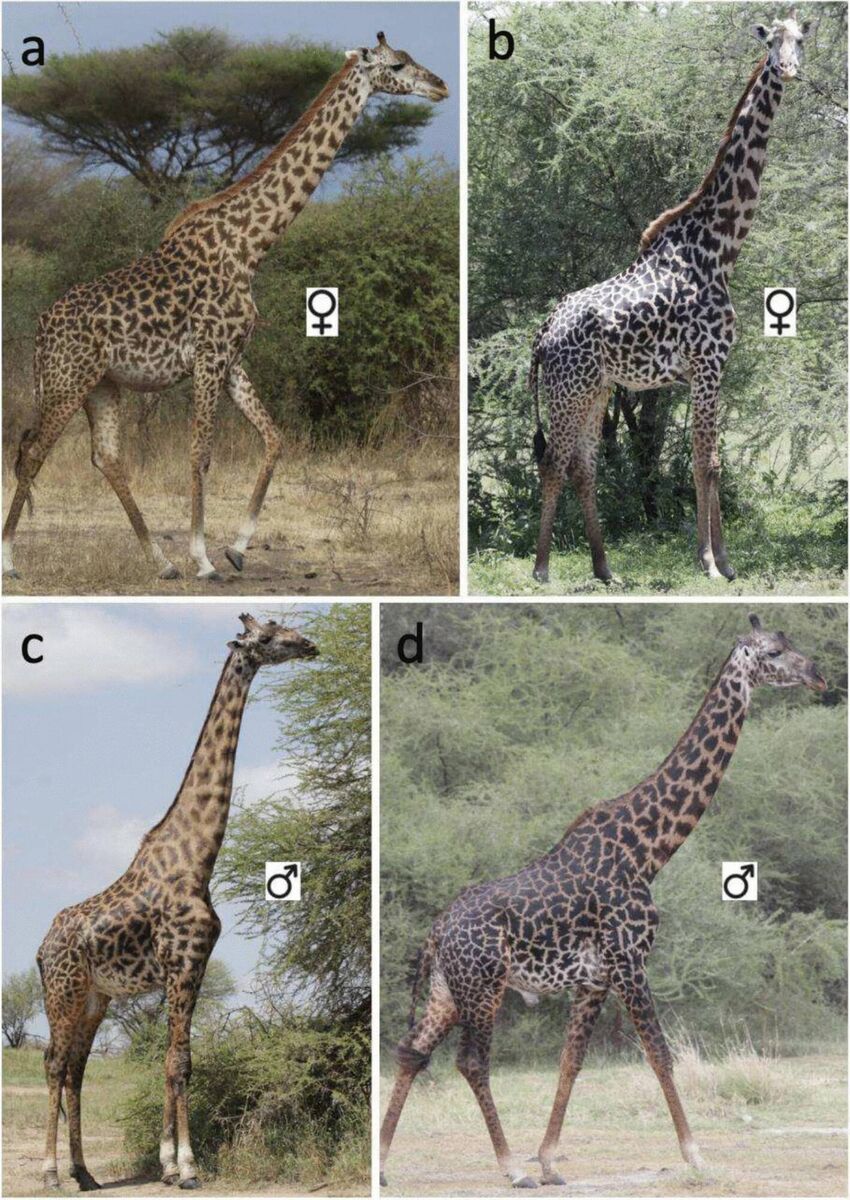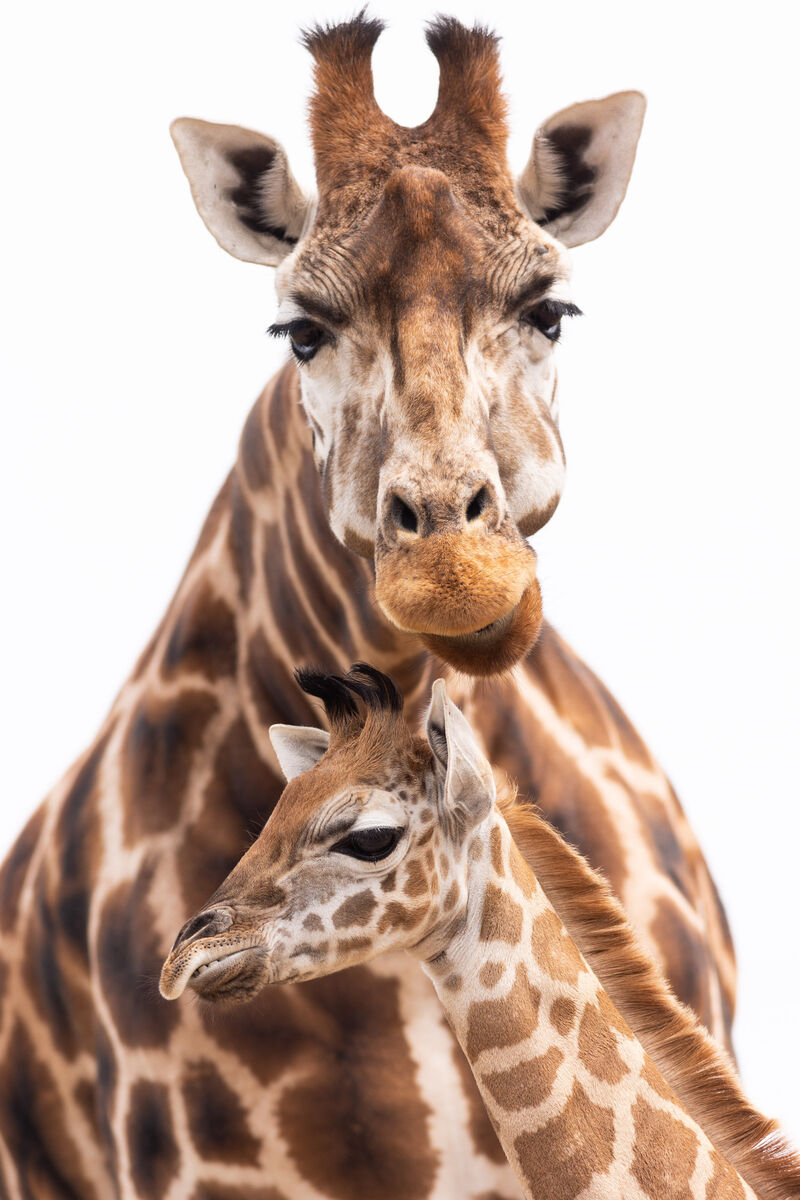Richard Collins: Long necks for sex... or snacks?

Douglas Cavener, of Pennsylvania State University, examined Masai giraffes in zoos and compared thousands of photos of them taken in Africa and in captivity worldwide. When born, males and females have similar proportions, but as they grow up, differences between the sexes appear. Picture: Larry Cummins
Kissing and cuddling is a rite-of-passage among teenagers. Condemned by Holy Mother Church, it was known as ‘necking’. The term isn’t used nowadays, but a modified version of it has surfaced in the most respectable of circles; zoologists are discussing ‘necks for sex’.
For Jean-Baptiste Lamarck, the giraffe’s neck was a favourite example of evolution in action. The necks of its ancestors had grown longer as the animals stretched upwards to reach leaves high in trees. As a result, he thought, the world’s tallest mammal gave birth to longer-necked offspring. But he has wrong; the muscles of blacksmiths' children are no bigger than office workers' children. ‘Acquired characteristics’ are not inherited.

Charles Darwin came up with a better explanation. Young giraffes, whose necks happened to be slightly longer than those of their peers, tended to fare better ‘in the struggle for life’. As a result, they had a feeding advantage and more of them survived to breed. Over succeeding generations, consequently, long necks became the norm.
But, in a paper published in two years ago, zoologists suggested that high-level browsing was not the only factor in long-neck evolution. They had studied the fossil remains of a ‘giraffoid’ which lived around 17 million years ago. The creature had reinforced cranial bones. These, the scientists argued, were used in head-butting. Neck length had evolved because males competed violently for access to females. The longer and stronger its neck, the more successful an individual was likely to be in the mating game.
But do modern giraffes also use their ‘necks for sex’? Males certainly assert dominance by ‘neck-sparring’, but does having a longer neck actually lead to fathering more offspring?

Douglas Cavener, of Pennsylvania State University, examined Masai giraffes in zoos and compared thousands of photos of them taken in Africa and in captivity worldwide. When born, males and females have similar proportions, but as they grow up, differences between the sexes appear. Males, his team confirmed, have longer front legs. They need extra height to mount and mate with their shorter-legged partners. Females have a more horizontal, forward-stooping, profile than males. Their torsos are longer so as to accommodate pregnancies.
When it comes to neck length, however, the situation becomes complicated. Males have longer, and thicker, necks in absolute terms. This is only to be expected because their bodies are, on average, about a third larger than those of females. But, surprisingly, when overall body size is taken into account, females have proportionately longer necks.

Female giraffes mature when three years old. From the age of four or five onwards, they are likely to be pregnant, or lactating, continuously. Their food requirements, therefore, differ from those of males. Choosy eaters, they use their longer necks to penetrate more deeply into trees, seeking out dietary necessities. There’s an added bonus; males and females compete less for food and so don’t take the ‘bit out of each other’s mouth’.
The researchers don’t rule out the necks-for-sex hypothesis, but they think that "the increased nutritional demands of females drove the evolution of giraffe long necks".







